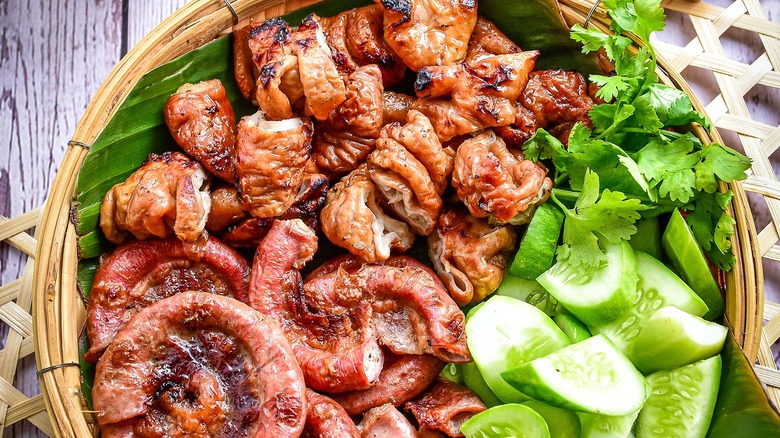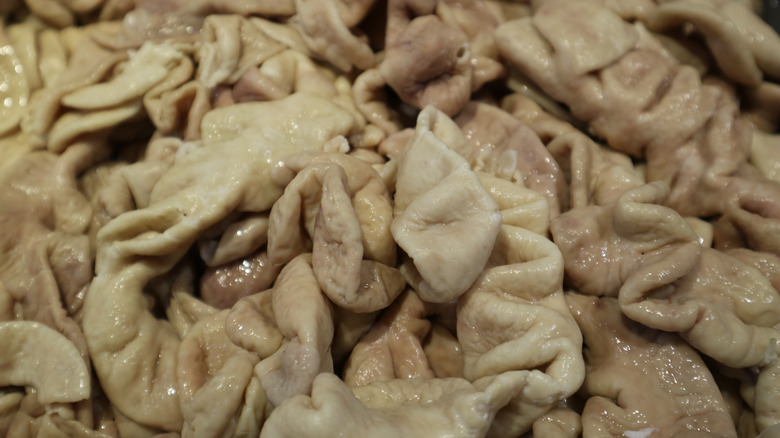How To Clean Chitterlings So They're Actually Safe To Eat
Chitterlings, often called chitlins for short, are a classic soul food staple but are definitely a love-it-or-hate-it type of food. That's because chitlins are the pig's small intestines, not to be confused with pork bung. The worst part about cooking with chitlins is that they need to be thoroughly cleaned, which is super time-consuming. Plus, they stink like you wouldn't believe.
Start by boiling the chitterlings in water for five minutes. This isn't long enough to cook them, but it's what the CDC recommends because it will kill most if not all of the bacteria on the chitterlings. When they're done boiling, drain the pot and allow them to cool off. Place them in a bucket or bowl of cold water with two tablespoons of baking soda, then let them soak for a few minutes.
Now you've boiled off all of the bacteria, but the chitterlings still need cleaning. You're going to take one piece at a time and remove any feces, straw, or anything else that might be attached that isn't edible. The last preparation step is to separate the fat from the chitterling. There is a very thin layer of fat attached to the chitlin which should be pulled off and tossed. Once the fat is removed and the chitlin has been cleaned, you're ready to cook.
Chitterlings can make you sick
There are lots of stores that sell clean chitterlings these days for anyone who doesn't want to take the time to do it themselves or doesn't want to deal with the smell. However, it's a lot cheaper to clean chitterlings yourself. You just have to make sure you're doing it right because you can get yersiniosis from chitlins that aren't cleaned properly.
Yersiniosis causes fever, abdominal pain, and bloody diarrhea, and it kills 35 people in the United States every year according to the CDC. It's not just when you eat it either. If you clean chitterlings and don't wash your hands properly afterward, you can cross-contaminate and give it to other people by touching them. Most children who get yersiniosis catch it from bacteria getting on them or their toys. You can wear gloves if you like, but if you wash your hands well with soap and water before and after, you should be fine.

